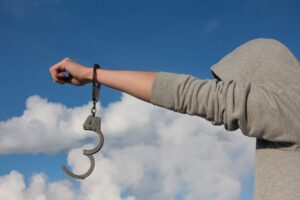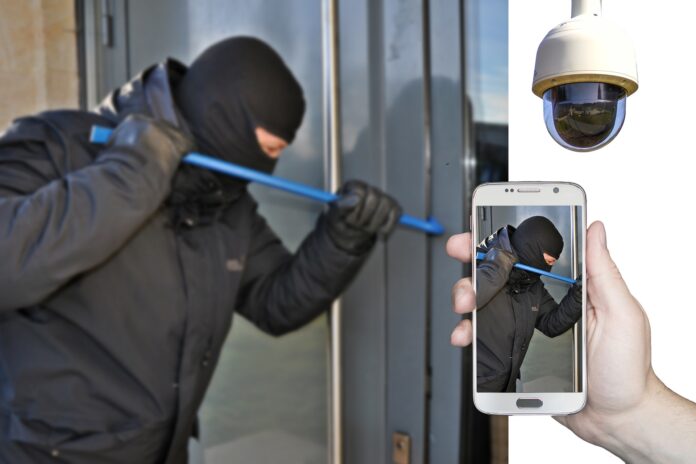Bilddiebstahl im Internet ist fur Rechteinhaber ein erhebliches Problem. Taglich werden Milliarden von Informationen in Form von Texten und Bildern verbreitet und der Offentlichkeit zugänglich gemacht. Allerdings vergessen wir bei der Nutzung von Inhalten Dritter oft, dass das Internet kein Rechtsraum ist und Rechte, insbesondere Urheberrechte Dritter, respektiert werden müssen.
Wenn Sie vor der Frage stehen, wie Sie, wenn Sie Bilddiebstahl nicht vermeiden konnen, Ihre Rechte zumindest effektiv durchsetzen können, lesen Sie weiter.
- Diebstahl von Bildern im Internet – Rechtslage
- Wer hat Interested?
- Wie kann ein Fotograf/Urheberrechtsverletzung gegen Urheberrechtsverletzungen vorgehen?
- Juristische Technologiedienstleistungen als mögliche Losung
- Gibt es eine bessere Möglichkeit, Bilddiebstahl zu bekampfen?
Stellen Sie sich vor, Sie sind im Supermarkt. Füllen Sie den Warenkorb bis zum Rand. Anschließend verlassen Sie das Geschäft mit der Ware, ohne zu bezahlen. Die wenigsten Menschen können sich das vorstellen. Sie wissen genau, dass es sich um einen Diebstahl und damit um ein Verbrechen handeln würde. Leider scheint ein solches Gefühl der Ungerechtigkeit in der digitalen Welt kaum zu existieren. In der Selbstbedienung wird uneingeschränkt alles gesturehlen, was nicht repariert wird: Photos, Grafiken, Musik, Texte, Videos und andere digitale Medien.
Warum sollten Leute, die nicht im Supermarkt klauen würden, digitale Inhalte stehlen? Wahrscheinlich, weil im Supermarkt klar ist, dass das, was man klaut, im Supermarkt nicht mehr erhältlich ist. Anders verhält es sich beim Stehlen digitaler Inhalte von einer Website: Man erstellt „nur“ eine Kopie davon, das Original verbleibt jedoch auf der Website. Aus diesem Grund scheinen sich viele Menschen der rechtlichen Konsequenzen ihres Handelns nicht bewusst zu sein.
Insbesondere Fotos werden häufig ohne Kenntnis des Bildautors, ohne Genehmigung und noch weniger ohne Bezahlung verwendet. Die gesturehlenen Bilder landen dann auf Websites, Blogs, Foren, sozialen Netzwerken und sogar in Werbebroschüren, Zeitschriften, Büchern oder Postkarten.
Image theft
Image theft, also known as copyright infringement, occurs when someone uses images without the permission of the original creator or owner. This can happen through various means, such as downloading images from the internet and using them on websites, social media, or other platforms without proper attribution or licensing.
Image theft not only violates the rights of the creator but also undermines their ability to earn a living from their work. It’s important to respect copyright laws and obtain proper permission or licensing before using images, whether for personal or commercial purposes. Additionally, giving credit to the original creator when using their image theft is a simple yet meaningful way to acknowledge their talent and contribution to the creative community.
-
Theft of images on the Internet – legal situation.

The common misconception is that you can just take whatever you want online. The constant and open availability of media on the web as well as image searches in search engines reinforce this false impression. Many people don’t know that image theft is a crime. However, businesses often fail to recognize or ignore the seriousness of the situation. Image theft is consciously tolerated and sometimes considered a trivial crime.
But on the contrary: the legal situation is completely clear. Using other people’s photos (and other works) without the permission of the copyright owner is a blatant violation of copyright law. Each copyright holder is also entitled to appropriate compensation for the use of their images. As a photographer, you also have the right to be named as the author. Image theft is not a trivial matter, but an offense that can result in heavy fines.
Anyone who uses photos on the Internet without the necessary consent or license from the author (photographer) or rights holder (e.g. photo agency) commits copyright infringement. The photographer can defend himself against this copyright infringement, for example in the form of a warning and demand a declaration of cessation from the user’s lawyer with a penalty clause, deletion, damages, and interests.
-
Who is interested?
In principle, anyone who publishes their images on the Internet can become a victim of image theft: as an artist, product photographer, or simply a photo taken privately. Conversely, anyone whose images are used without permission on the Internet – or in any other way – is also protected by copyright.
First of all, the professional photographers should be mentioned here. A picture taker has great chances to introduce his work and in this manner his abilities to individuals on his landing page or another stage like Facebook, Instagram, Pinterest, or Twitter.
By publishing photos on the Internet, you are also allowing your copyrights to be violated. Many users still believe in the myth that any image theft found on the Internet can be used freely. This is simply wrong and very annoying for photographers.
Neben den Kosten für die technische Ausstattung ist auch derbeitdessuswand pro Bild hoch. The Vorbereitung zum Fotografieren ist zeitaufwändig und die Nachbearbeitung der Fotos mit entsprechenden Programmen wie Photoshop erfordert Zeit und geistige Resources.
Der Zeitaufwand, die Mühe und die eigene Kreativität müssen entsprechend belohnt werden. Daher stellen die Rechtsverletzungen auch für professionale Fotografen ein erhebliches wirtschaftliches Problem dar. Schließlich handelt es sich bei ihren Fotos um Product, die kostenlos über die digitale Ladentheke laufen.
Doch nicht nur professionale Fotografen sind betroffen. Auch Online-Shop-Betreiber müssen sich mit den Folgen von Bilddiebstahl auseinandersetzen. Wenn Sie für Ihr Unternehmen Fotos machen oder von Dritten fotografieren lassen, um Ihre Product bestmöglich zu bewerben, werden Sie vieelleicht feststellen:
Wetbewerber nutzen die Bilder für ihre Werbezwecke. Ein solcher Bilddiebstahl ist in zweierlei Hinsicht ärgerlich: Der Konkurrent spart erheblich Zeit und Geld für die Arbeit an seinem Product und profitiert von den unerlaubt aufgenommenen Bildern für die eigene Verkaufsförderung.
Neben den oben genannten professionalellen Fotografen and Online-Shop-Betreibern haben auch Bildagenturen und Nachrichtenagenturen ein echtes Intereste daran, sich vor der unbefugten Nutzung ihrer Bilder zu schützen. Allerdings sind diese nicht immer die ursprünglichen Inhaber des Urheberrechts, sondern leiten ihre jeweiligen Rechte von den zelnen Urhebern ab, ebenso wie teilweise auch die Store-Betreiber.
-
How can the photo/copyright infringement address copyright infringement?

To protect the image, the image must first be shared and protected. In this case, that means you need to maintain the right image theft search for your loved one. This is due to the consideration per farlo da soli:
- You can use the function of the big Google engine. Google Image’s reverse engine is powerful and allows you to use many of your images on the web. The desired image can be viewed on Google and added to the Ricerca box. Alternatively, you can copy the URL from the image theft to the rice field. Google shows all image theft as well as identical websites and similar images.
However, please note that the manual rice cutter is rich in slow pace and impegno. Incredibly, there are a large number of photos. It is possible to control the image individually and at regular intervals. This is the only way to ensure optimal protection from images and protection.
- Another viable approach is not to start the search from the image but to place potential users at the beginning of the survey. For example, online store operators may regularly visit competitors’ websites and search for their image theft. In this context, it is often interesting for professional photographers to regularly take a look at the online presence of former licensees and clients or even former interested parties with whom no licensing agreement has been concluded.
For more information, see the article “5 Helpful Tips for Finding Stolen Photos Online.”
The same applies to all social media profiles in both constellations.
If it is clear that an image theft has been stolen, the owner of the work must first obtain evidence of infringement. Evidence is essential for a possible legal dispute at the latest. Screenshots are ideal for this purpose: save them with a field containing the Internet address, date, and time.
To subsequently enforce existing legal claims, the following approach may be possible in many legal systems:
If an image theft is stolen, an alert may be issued. This can be done by the author himself or by a lawyer.
The warning contains a desist statement with a penalty clause. The recipient is required to sign it and return it.
If a signed desist statement is not obtained, the offender can obtain a temporary injunction from the court as soon as possible.
A trial before the courts is also possible. Also in this case it may be useful to collaborate with a lawyer specializing in copyright law.
-
Legal technical services can be purchased.
The following copyright titles are of interest if you do not want to make them more effective in controlling image theft on the Internet. It is considered that the risk to residents is too high and the follow-up is in line with the approach to image theft creation and self-directed work, which in the case of image inventions has been completed and legalized over a long period. However, many photos have to be sent later to solve the problem.
Currently, we are a specialized company that deals with legal tech services and addresses the problem so clearly. Working primarily with software support teams, account managers, and content advocates can help you protect your photos online. Please note that the photos were taken by the owner himself and other owners of the photo are used illegally.
To customize the image, use sophisticated correspondence and technical forensics software. Maybe it’s the pixel, engine, and image theft editing tools whose images are heavily altered, distorted, or inserted into a collage. I offer other noti also PIXRAY, Copytrack, Pixsy, and Plaghunter. Please see our article “A Panoramic View of Copyright Monitoring Solution for My Photos” for another option.
PIXRAY, for example, is one well until goodbye. If you wish to do this without your instructions, please contact us and contact your specialists on your instructions for legal action against you. The international law firm must respect local laws to ensure that you receive adequate protection for copyright infringement and copyright infringement. You agree that you can focus on your creativity and the Intero process will be carried out in a 100% secure mode with at least the PIXRAY account.
Conclusion
There are many ways to combat image theft, but most situations can be handled professionally without burning bridges or destroying your reputation. Furthermore, it can almost always be resolved without resorting to a lawyer or court.
If someone blatantly steals a photo and then refuses to remove it or ignores all attempts to contact you, then shut down social media and send in your army. That didn’t happen here. The entire process of determining if my image theft was being used, resolving the issue, and paying the invoice took approximately 6 days. It took some patience, but the problem was eventually resolved peacefully.
What are your thoughts? Did I make things too easy for him? Too heavy? What would you have done differently? Let me know!

